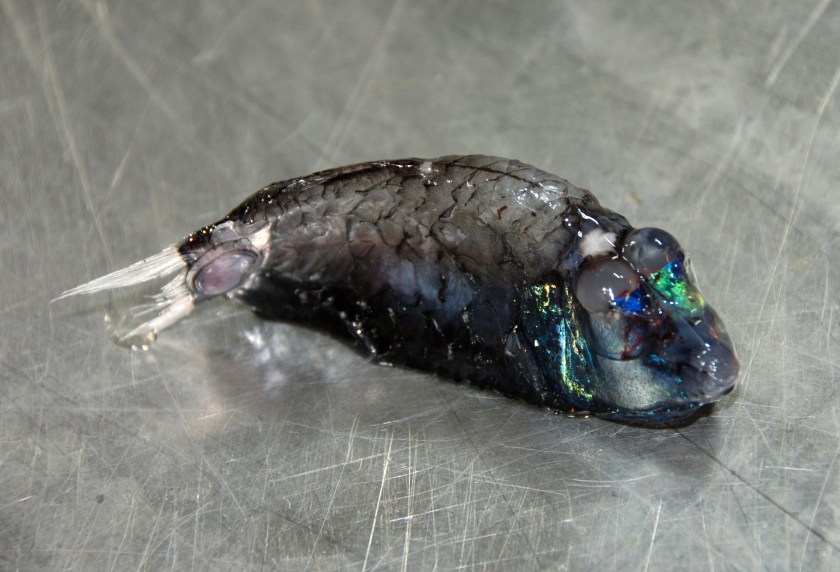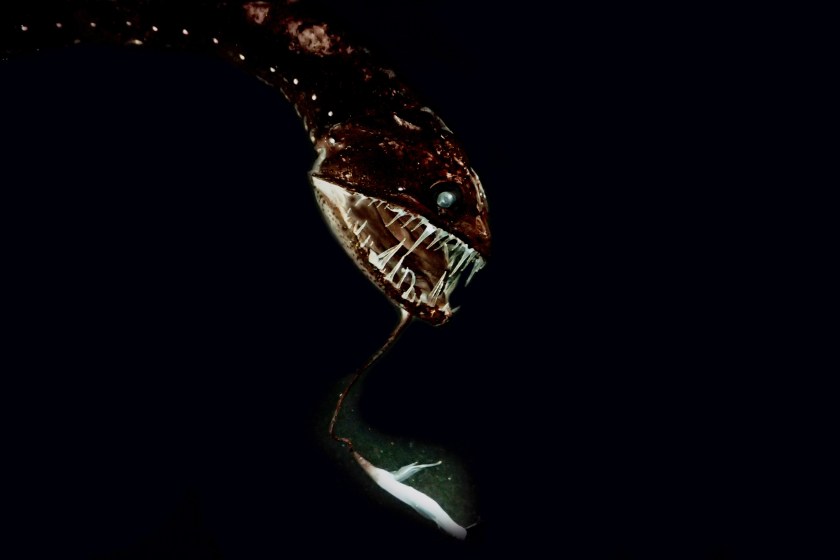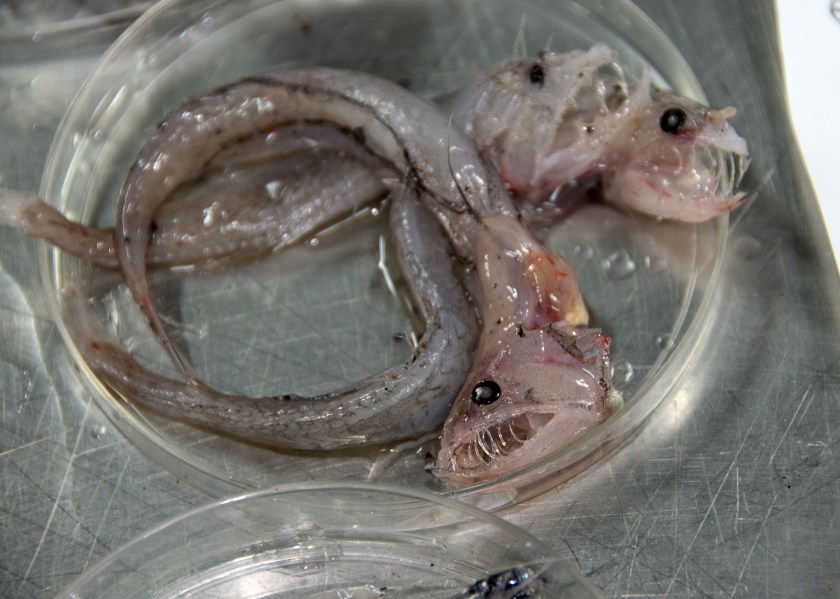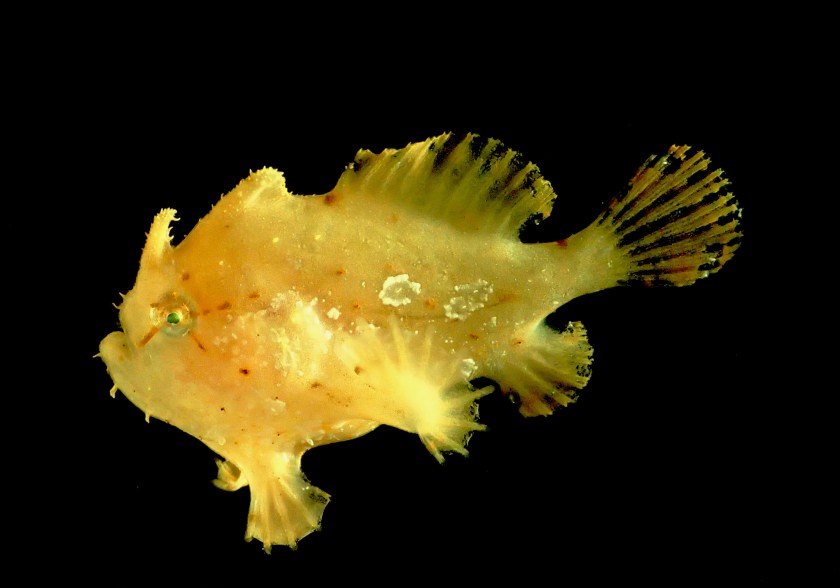
Scientists returning from a recent deep-sea expedition are struggling to explain why they found an unusually high concentration of marine life off the coast of Hawaii. The federal researchers were surprised to see an abundance of sawtooth eels, dragonfish, and other mercurial creatures at that depth.
The stretch of ocean in question, around a mile off the Big Island’s coast, defies the norm. While Hawaii is generally known by experts to be teeming with sea life, the rest of the surrounding Pacific waters are a biological wasteland.
In a recent interview with the Associated Press, the expedition’s lead researcher and NOAA oceanographer Jamison Gove believes therein lies the mystery: “[We] know that Hawaii is this biological hotspot,” Gove said, “So there’s kind of this paradox: How can you have so much productivity around Hawaii yet the surrounding ocean waters are literally a barren ocean landscape?”
The researchers used large trawling nets to take samples at depths as deep as 2,000 feet, but it will take at least a year for those findings to be released. Some experts attribute the unusual abundance of sea life to the manner in which the seafloor dramatically rises approaching the island, bringing up nutrients from the bottom and providing food to a cornucopia of marine animals.
This geological feature, coupled with currents and water temperature, seems to have created the perfect conditions for deep-sea life to bloom. Explore these creatures in the video below.
This article was featured in the InsideHook newsletter. Sign up now.


























